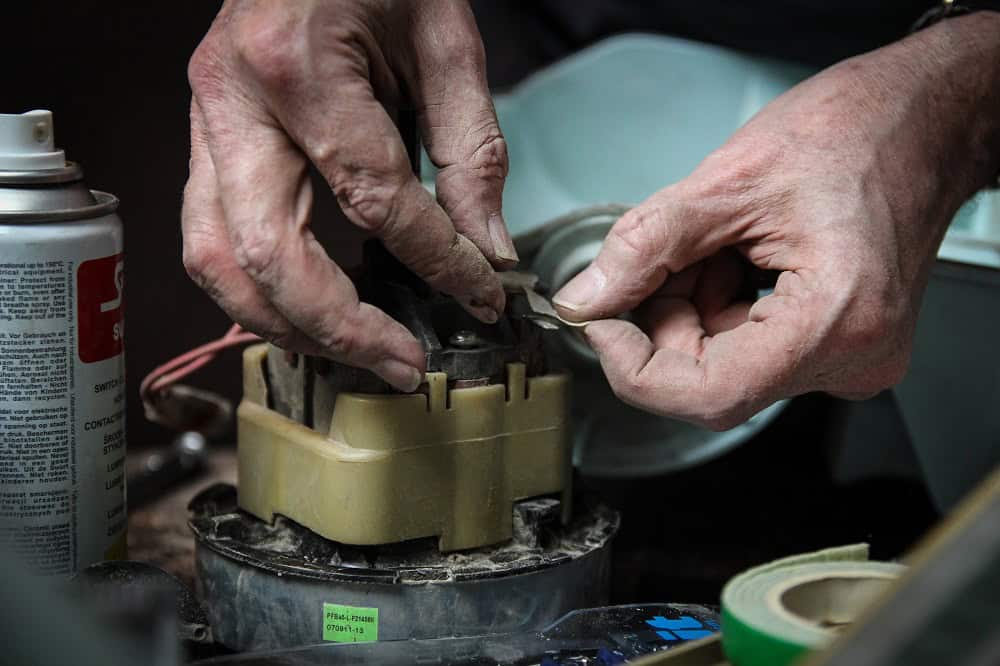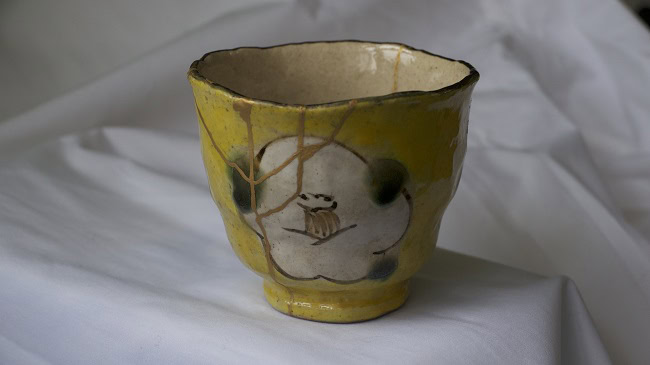In a society where worth sometimes seems defined by our ability to purchase, Lucy Purdy considers whether possessions can be positive
Today’s feverish pursuit of things induces as much guilt in our individual and collective consciences as it wreaks ecological damage. Though data recently released by the Office of National Statistics suggests people in the UK are consuming slightly less than a year ago, we need no numbers to prove that millions of us have far too much stuff. From the clothes we never wear to the gadgets we don’t use, our wardrobes, cupboards and planet are heaving under the pressure of material saturation.
Becoming a society obsessed with acquisition has done our mental health no favours either, with record levels of stress and status-related anxiety. Psychologists at the University of California found that women affected by clutter shared patterns of the stress hormone cortisol consistent with people suffering from the likes of post-traumatic stress disorder. Concerns about capitalism and the environment are woven tightly into this cultural angst.
Yet our desire for things is nothing new – and it isn’t inherently bad. “From a behavioural point of view, being drawn to novelty is natural: we’re just doing what we do as humans,” says Jonathan Chapman, professor of sustainable design at the University of Brighton. “It’s part of our survival instinct and what makes us creative and innovative. But advertising and capitalism put that under a magnifying glass, exaggerating and antagonising it.”
Though they promise much, material goods simply cannot meet our fundamental desires and so their allure is usually short-lived, says Chapman. “For millennia, this innate feature was perfectly satisfied by the fascination of being alive in a world where the majority of situations were not explained. A rainbow appeared and people assumed something magical was taking place – for the next month that’s all they would have talked about. Whereas today, our lives come with the majority of problems already solved: much of the poetry and mystery has been stripped away by the brilliance of science. And so it leaves this innate quota within us unsatisfied, unfilled.”

For makers and menders, connecting with possessions can build community and bring lasting satisfaction. Credit: Heather Agyepong
As author and environmentalist George Monbiot writes: “Are we so bored that we need to receive this junk to ignite one last spark of hedonic satisfaction?” Could experiences, connection, community and a refreshed relationship with things better satisfy our needs? Given that this trait is embedded deep in our nature, if we become less passive consumers and more engaged and active borrowers, users and creators of things, could it become a force of positivity and fulfilment once more?
“Absolutely. In fact, it already is,” says Ruth Potts, co-author of The New Materialism manifesto. “The problem is that we’ve been sold a false version of ‘novelty’ as a passive, debilitating alternative to the real thing. There’s no lasting pleasure in things that don’t age, we can’t repair and have very little control over. In a green economy characterised by less passive consumerism and more active production, making, adapting, mending, sharing, repairing, there is far more potential for real novelty and pleasure.” Potts points to ecological economist Herman Daly who believes the economy of the future needs to allow a “subtle and complex economics of maintenance, qualitative improvements, sharing, frugality and adaptation to natural limits. It is an economics of better, not bigger.”
Unambiguously, Potts argues, this calls for a shift from a consumer to a producer society. Her manifesto helps articulate how we could roll back our gradual deskilling and the ‘impoverishment of work’. “This is a world where we don’t just consume collaboratively, we produce collaboratively too. Materialism has become synonymous with a strange perversion of freedom, our worth defined by our ability to purchase to such a degree that the most tentative of attempts to question it are attacked as hair shirt miserabilism, out to deny us the stuff we deserve.”
Our wardrobes, cupboards and planet are heaving under the pressure of material saturation
Making things also matters, Potts believes, because it breeds a different kind of community. Thinktank employee turned motor mechanic and author Matthew B. Crawford agrees. Having swapped ‘policy-wonkery’ for oil-soaked overalls, he finds intrinsic, personal satisfaction in his work, and his craft rewards him with membership of an appreciative community: “I try to be a good motorcycle mechanic. This effort connects me to others, in particular to those who exemplify good motorcycling, because it is they who can best judge how well I have realised the functional goods I’m aiming at.”
By mending and looking after the things we already have, we enter into a different relationship with them, a longer-term, caring one, rather than the shallow and often abusive consumer bond. The latter is perhaps particularly tangible when it comes to electronics – the fastest-growing waste stream in the world. Londonbased charity The Restart Project helps people fix both their broken electronic projects and their relationship with them at the same time. “We need to appreciate what we have more and use it for longer,” says Janet Gunter from the charity. “If we are going to own it, we need to truly own it, and stop feeling victim to our electronics. The good news is: all of this just feels better.”
She reports seeing a transformative feeling of empowerment in the people who learn how to fix things at The Restart Project’s regular workshops, overcoming anxieties and fears as they open up the mysterious black boxes on which we increasingly depend. “We notice that often all it takes is one or two fixes and people start approaching everything differently: fixing, modifying and hacking the things they have, but also being smarter when they need to buy new products, understanding trade-offs between functionality, longevity and cost.”

The Japanese art of Kintsugi, which mends broken pottery with streaks of gold lacquer, is being revived. Credit: Tom Slemmons
The project helps counter a sense of futility by operating in social settings. “Everything we do is social,” says Gunter. “Unlike marketers, we don’t treat others – or ourselves – as lonely individuals ruled by twitches and impulses. We appeal to our desire to meet other people, learn and have fun together.”
Many other individuals, organisations and movements are seeking to recalibrate our relationship with material possessions. For instance, professor Chapman fused his fascination with anthropology with a passion for design to develop the concept of emotionally durable design. The theory, pioneered in his 2005 book of the same name, suggests that more, not less connection with stuff is what we need.
Chapman has unpicked some of the complex psychology behind the way we relate to objects and believes that sustainable design could become a forerunner of positive social change. His theory designs out ‘replacement motives’, challenging the grim reality of planned obsolescence, and brings emotional durability to the fore alongside the more conventional physical durability.
Products designed in line with this ethos include Bethan Laura Wood’s patterned teacup, coloured with stains that render it more beautiful as it ages, and the Erosion mobile phone, dreamed up by the Inheritable Futures Laboratory. The phone’s body is made from a degradable biopolymer, which becomes smoother and more pleasing in the hand as it is worn by daily use, like a pebble polished by the tide.
If we are going to own it, we need to truly own it, and stop feeling victim to our electronics
While the concept was unheard of a few years ago, Chapman now advises multiple global brands and is invited to share his ideas around the world. For example, Dutch technology company Philips sought his expertise when developing its new range of high-quality DIY tools – notably designed for hire, rather than for sale. “It felt quite massive,” says Chapman, “to walk through the corridors of a huge business like that and talk to people who know about the concept.”
Others are deploying old wisdom to prolong the life of their possessions. The centuries-old Japanese art of Kintsugi, in which broken pottery is mended with streaks of gold lacquer, is being rediscovered by a generation seeking fresh and improved ways of relating to material things. In Kintsugi, as golden lines take the place of cracks, loss becomes an addition. Damage is transformed into beauty. Though these carefully repaired pieces do not become more financially valuable, they assume a new spiritual worth and are treasured rather than thrown away.
Exploring these concepts of possession and ownership leads inevitably to our relationship with the natural world. In 1936, as the western industrialised world sank into a deep economic depression, French novelist Jean Giono penned an essay entitled Les Vraies Richesses (True Riches). “Men have deserted the earth,” he wrote. “They no longer want fruit, nor wheat, nor liberty, nor joy. They only want what they have created themselves.”
The natural world, surely the most valuable thing humankind has ever had in its ‘possession’, seems an obvious place to turn to when recalibrating what we mean by worth. What manufactured item could have more inherent value than the rock from which its metal components were mined? What gadget warrants the sky being clouded by pollutant-pumping factories, or the sea choked with plastic particles?
Objects linked to satisfying, pleasurable or fulfilling experiences will always be more valuable because, in essence, people do not seek to buy products, but meanings. Ultimately, objects do not distil down to ‘the thing’ but the sharing of that thing, what can be done with it, and its ability to enrich our lives, environments and relationships.
Stuff can be a useful tool, a means to social connection, a celebration of beauty, a satisfying challenge to our skills and ability to innovate. If we can unshackle ourselves from the burden of ecological damage and guilt, why restrict such possibilities? Crucially, we need to first find genuine freedom to replace the illusory version promised by the market.
Lasting meaning, real pleasure: true riches.
Main image: Studio Blackburn
